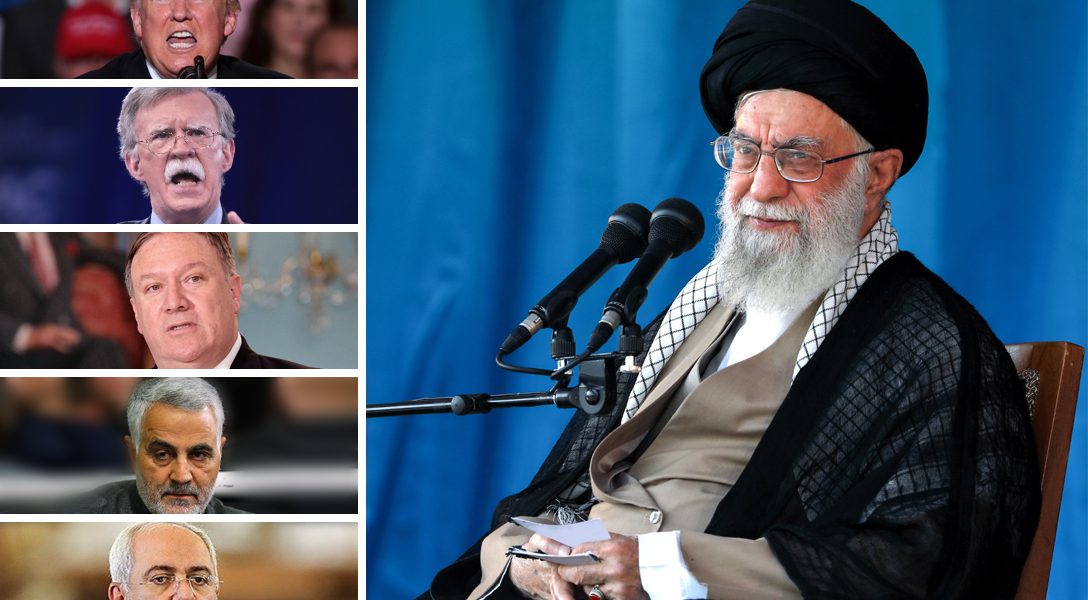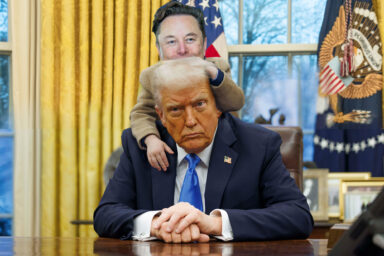The assassination of Quds Force General Qassem Soleimani could trigger an escalation of violence in the Middle East. Six months ago, we told you about him... and the other men who could start a war between the US and Iran.
Six months ago, WhoWhatWhy presented a cast of characters that could trigger a war between the US and Iran. Now that Quds Force General Qassem Soleimani has been assassinated in an American drone strike in Baghdad, that list is shorter… but the possibility of another armed conflict in the Middle East is much higher.
You can find a profile of Soleimani below; he’s number 5 on our list.
— WhoWhatWhy Editors, January 3, 2020.
HERE’S OUR ORIGINAL STORY:
For Americans, the Fourth of July is a day filled with fun, family barbeques, poolside parties, fireworks, and overt displays of patriotism. For Iranians, however, it is a solemn day, a day of mourning, and a day of remembrance.
On July 3, 1988, the USS Vincennes, a missile cruiser, misidentified an Iranian civilian flight, Iran Air Flight 655, en-route to Dubai as an Iranian Airforce F-14. A shootdown order was given and all 290 people aboard were killed. While the US did pay a $61.8 million settlement ($213,000 per passenger and crew members), it has never offered a formal apology or taken legal responsibility for the incident. Worse, then–Vice President George H.W. Bush told a crowd at an August 1988 campaign rally, “I will never apologize for the United States — I don’t care what the facts are, I’m not an apologize-for-America kind of guy.”
Likewise, from the beginning of his 2016 election campaign, Donald Trump’s rhetoric often reflected his own zero-sum competition mentality, born from a lifetime as a bruiser businessman from New York. One of the pillars of his foreign and national security policy from the beginning was to undo what he viewed as capitulation by former President Barack Obama to Iran.
As with Bush Sr., Trump, his national security adviser John Bolton, and Secretary of State Mike Pompeo similarly experience cognitive dissonance, are highly subjective in their perceptions of diplomatic history, and are “never-apologize-for-America” kind of guys.
Of the three, ironically, Trump seems to be the most flexible policymaker. This is evidenced by his decision to stand down US forces that were reportedly planning airstrikes against Iran (against the advice of Bolton and Pompeo).
Foreign policy and national security decision-making is much less diffuse in Iran. Supreme Leader Ayatollah Ali Khamenei makes all the important decisions. There is no system of checks and balances and no room for dissent or contradiction by any of his advisers or staff. Since the 1979 revolution, the Iranian Revolutionary Guard Corps (IRGC) has, in tandem with the supreme leader, exerted overwhelming influence in foreign affairs. In April 2019, in response to the Trump administration’s decision to designate the IRGC as a terrorist group, Iranian parliamentarians traded their business suits for the dark olive uniforms of the IRGC. They stood in solidarity with the IRGC in defiance of the designation, and demonstrated just how entwined the IRGC is in Iranian politics.
The summer of 2019 has seen aggression ratcheting up in the Persian Gulf and in the Strait of Hormuz, a vital choke point for the world’s oil supply, with tit-for-tat interactions between US forces, those of its allies, and Iran. The aircraft carrier USS Boxer claimed it had shot down an Iranian drone that came too close, further escalating tensions between Washington and Tehran. Iran denied it was one of its own drones.
As the axis between war and peace wobbles precariously, WhoWhatWhy profiles the personalities and beliefs of the key individuals who will decide the outcome.
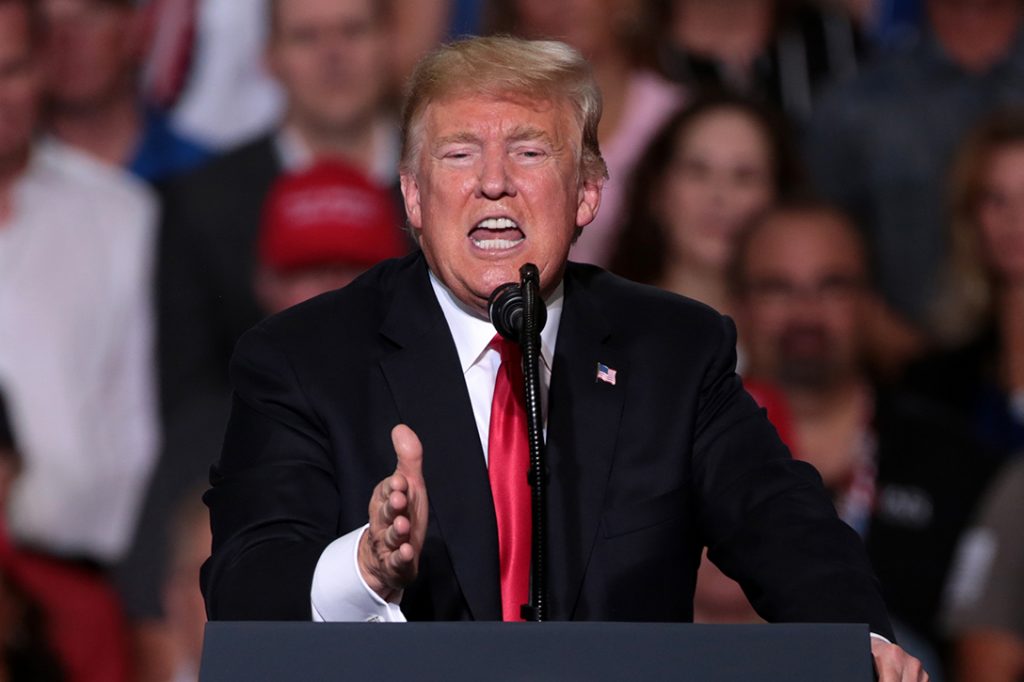
1) President Donald Trump
Trump’s strategic calculus regarding Iran involves several intersecting psychological, domestic, and international variables. Given the president’s narcissism, his 2020 presidential campaign is at the top of the list. By extension, demonstrating to his domestic constituency that he is a “tough guy” who won’t back down from confrontation with an adversarial power is essential to securing votes. Trump, with the help of conservative media outlets like Fox News, has done much to build a narrative that Iran is the gravest existential threat facing the US. In May 2018, Trump kept his campaign promise to reverse what he characterized as Obama’s capitulation to Iran and announced America’s withdrawal from the 2015 Joint Comprehensive Plan of Action (JCPOA).
The JCPOA was an agreement reached by China, France, Russia, Britain, the United States, Germany, and Iran. It was designed to curtail Iran’s nuclear material production and delay its building, testing and fielding of a nuclear weapon. Iran agreed to these limits In exchange for sanctions relief and the un-freezing of Iranian financial assets.
Second, Trump has been keen to foster a strong diplomatic and security relationship with Crown Prince Mohammad Bin Salman (MBS) of Saudi Arabia, who believe they are the defenders of Sunni Islam and a committed foe of Iran, the heartland of Shia Muslims — seen as heretics by many Sunni Muslims.
This desire to strengthen relations with MBS is most evident whenever Trump and his cabinet downplay the role of MBS in orchestrating the October 2018 assassination of dissident journalist Jamal Khashoggi in Turkey. It is also evident with the US continuing tactical support for the Saudi-led Sunni Gulf coalition in the kingdom’s proxy war with Iran in Yemen, as well as excluding Saudi Arabia from an internationally recognized list of countries that are in violation of the the Child Soldiers Prevention Act of 2008.
Last month, Trump vetoed three bills that would have halted billions of dollars in US arms sales to Saudi Arabia, declaring that the kingdom was a “bulwark against the malign activities of Iran.” In a letter explaining the veto, Trump said that restricting the sale would “weaken America’s global competitiveness and damage the important relationships we share with our allies and partners.”
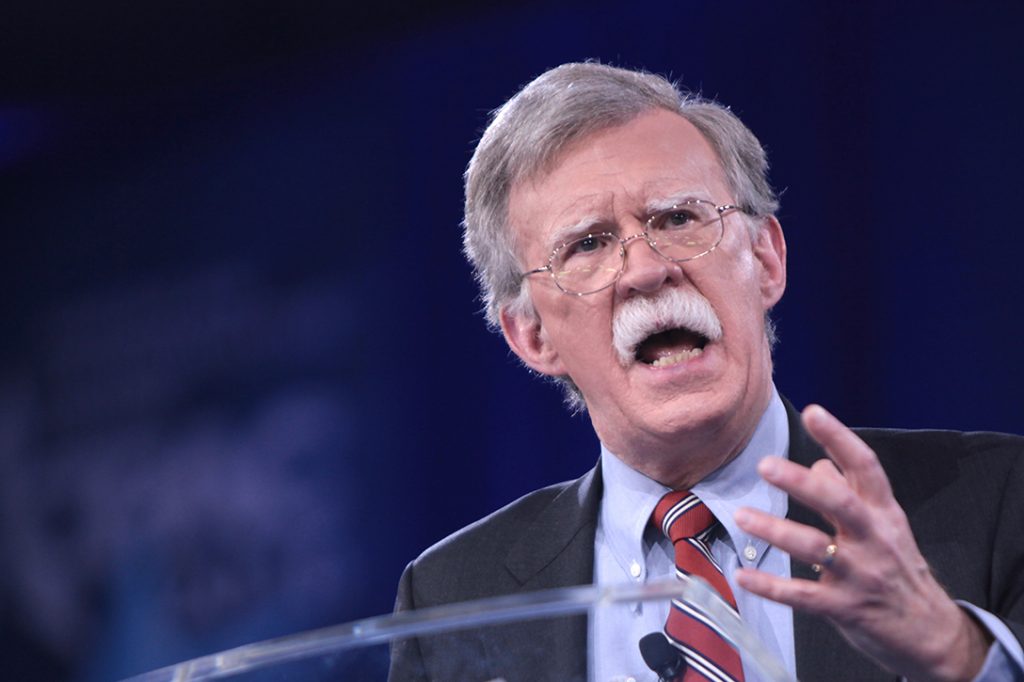
2) National Security Adviser John Bolton
Bolton’s thinking on foreign policy and national security has been consistent since his days working in former President George W. Bush’s administration.
Bolton not only lacks the capacity for reflection and introspection, he’s also publicly declared his support for the Iranian militant opposition group, Mojahedin-e Khalq (MEK), which blends Shia Islam and Marxist ideology. According to Iran historian Ervand Abrahamian, “(Reza) Rezai (a member of the MEK’s Central Committee during 1965-1973) further argued that … it was the duty of all Muslims to continue this struggle to create a ‘classless society’ and destroy all forms of capitalism, despotism, and imperialism.” Bolton’s support for MEK, from which he reportedly accepted a $40,000 speaking fee at a time when the US designated MEK as a terrorist group, contrasts with his vehement opposition to Marxism or socialism in the Western Hemisphere. On the 58th anniversary of the failed Bay of Pigs Invasion, Bolton told a group of veterans in Florida, “We will need your help in the days ahead. We must all reject the forces of communism and socialism in this hemisphere — and in this country.” This extreme contradiction indicates either some form of realpolitik, a glaring prejudice toward Iran, or a combination of the two.
Bolton’s desire for regime change in Iran is unambiguous. During a speech in 2016, he told the crowd, “I just say again what I have been saying for 10 years that I’ve been coming to this rally: The regime in Tehran needs to be overthrown at the earliest opportunity!” In 2015, Bolton wrote an op-ed in the New York Times advocating a US attack on Iran’s nuclear facilities.
“The United States could do a thorough job of destruction, but Israel alone can do what’s necessary,” he stated. “Such action should be combined with vigorous American support for Iran’s opposition, aimed at regime change in Tehran.”
Bolton seems ignorant of the last time the US engaged in regime change in Iran. In 1953, the US and the UK launched a coup that ousted democratically elected President Mohammad Mossaddegh and reinstalled the Shah. The Shah’s forced liberalization and brutal oppression fomented a substantial revolutionary movement that eventually resulted in the 1979 Iran hostage crisis, the Iranian revolution, and the rise of Ayatollah Ruhollah Khomeini.
Bolton’s logic for attacking Iran is essentially the same as the rationale initially provided by the Bush Administration for the 2003 War in Iraq: war with Iran would be better now rather than later. If Iran acquired nuclear weapons and the means to deploy them — something that is more likely given the Trump administration’s reneging on the JCPOA — regime change in Iran would be exponentially more difficult and risk a nuclear conflict.
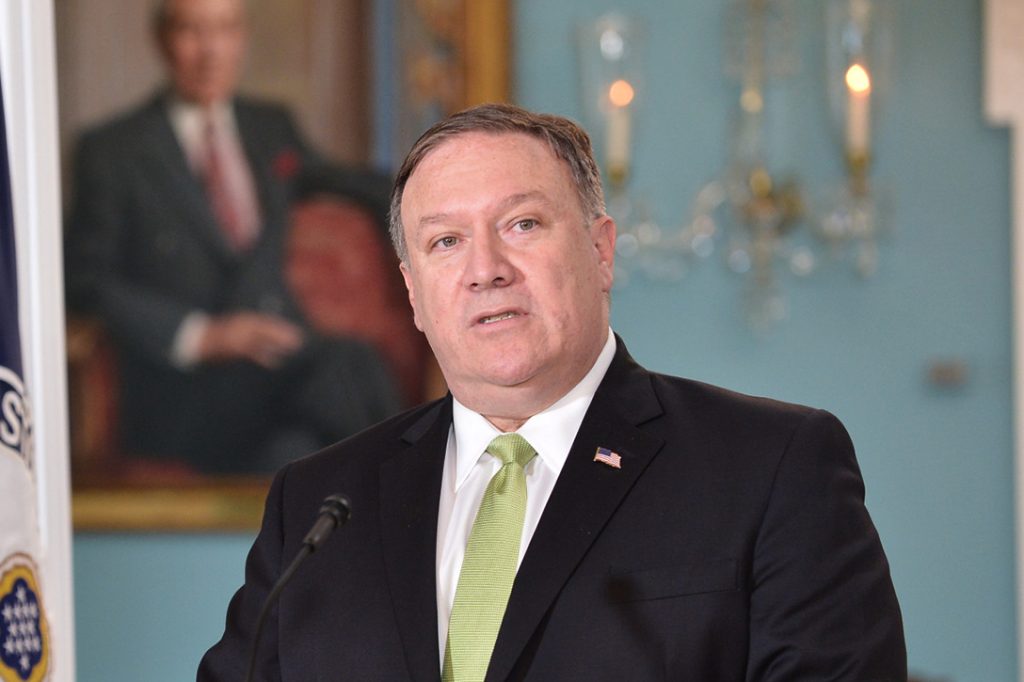
3) Secretary of State Mike Pompeo
Pompeo’s biases and beliefs are as disconcerting as Bolton’s. To begin with, he has demonstrated deep anti-Muslim leanings.
“The threat to America is from people who deeply believe that Islam is the way and the light and the only answer,” Pompeo told a church group in his hometown of Wichita in 2014. “They abhor Christians and will continue to press against us until we make sure that we pray and stand and fight and make sure we know that Jesus Christ as our savior is truly the only solution for our world.”
Pompeo has shown particular hostility towards Iran. In his first public address as secretary of state, he castigated what he viewed as a combination of naiveté and acquiescence on the part of the Obama administration’s negotiation of the JCPOA, along with a lengthy list of demands, several of which were already being met by the JCPOA. Iran was cooperating with the IAEA, providing unqualified access to all sites, and staying within the agreed-upon enrichment ceiling. Nevertheless, Pompeo demanded that Iran permanently abandon any ambitions of becoming a nuclear power.
Likewise, Pompeo has demanded that Tehran cease its support for Hezbollah, the Iran-backed militia, which has become the most potent force in Lebanon — something Iran is unlikely to do in light of its reliance on Hezbollah and other proxies to pursue its foreign-policy and security objectives. Pompeo has also demanded that the Popular Mobilization Front, an Iraqi state-sponsored militia umbrella organization which both he and Bolton claim is a mere front for the IRGC, be demobilized, disarmed, and completely reintegrated into the Iraqi political-security establishment.
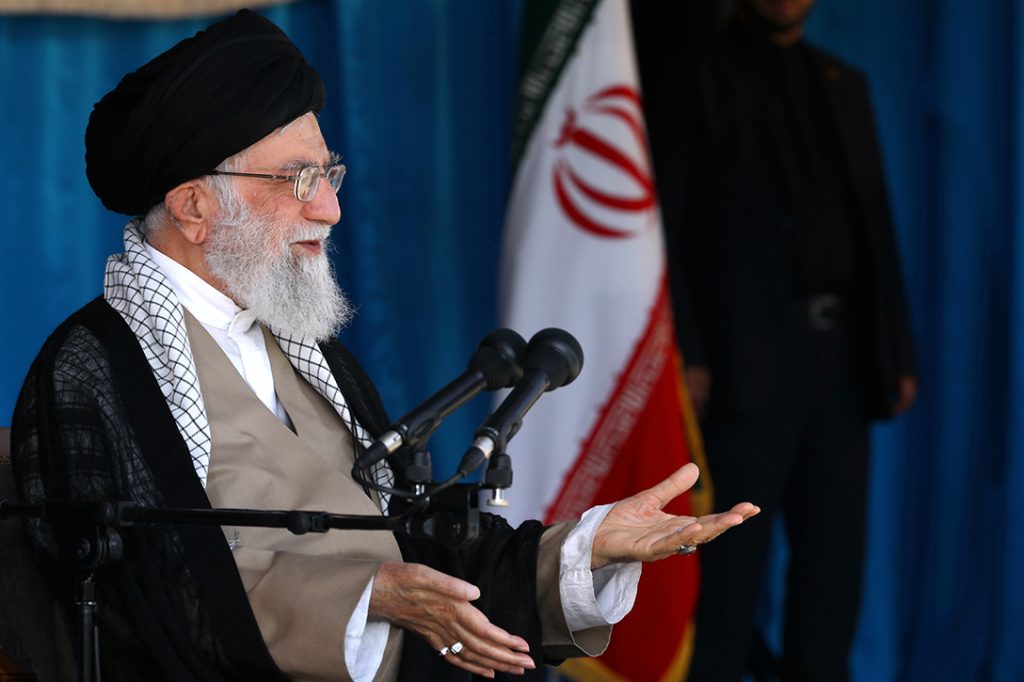
4) Ayatollah Khamenei
The 80-year-old Ayatollah Khamenei, Supreme Leader of Iran, grew up in a poor and pious household. Khamenei began studying the Koran when he was just four years old. At 18, he made a religious pilgrimage to the holy Shia city of Najaf in Iraq.
In 1958, Khamenei’s father requested that he return home to Iran. From 1958 to 1964, he studied under the future Ayatollah Ruhollah Khomeini.
“In the areas of political and revolutionary ideas and Islamic jurisprudence, I am certainly a disciple of Imam Khomeini,” said Khamenei. “Yet the very first sparks of consciousness concerning Islamic, revolutionary ideas and the duty to fight the Shah’s despotism and his British supporters was kindled in my soul at the age of 13 when the brave cleric, Nawwab Safavi, later martyred by the Shah’s regime, came to our school in Mashhad in 1952 and delivered a fiery speech against the Shah’s anti-Islamic and devious policies.”
Nawwab Safavi was an ultraconservative Shia cleric and ardent Iranian nationalist. In Qom, in 1962, Ali Khamenei joined Khomenei’s growing anti-Western/anti-Shah revolutionary movement. His dissident activities led to him being targeted by SAVAK — the Shah’s secret police (created and trained by the CIA) — and imprisoned and tortured multiple times from 1963 to 1976.
Because of Khamenei’s educational background, formative years, experience as a revolutionary, and time imprisoned and tortured by the CIA-trained SAVAK, he holds the US in contempt and has declared the prospect of negotiating with the Trump administration as “double poison.”
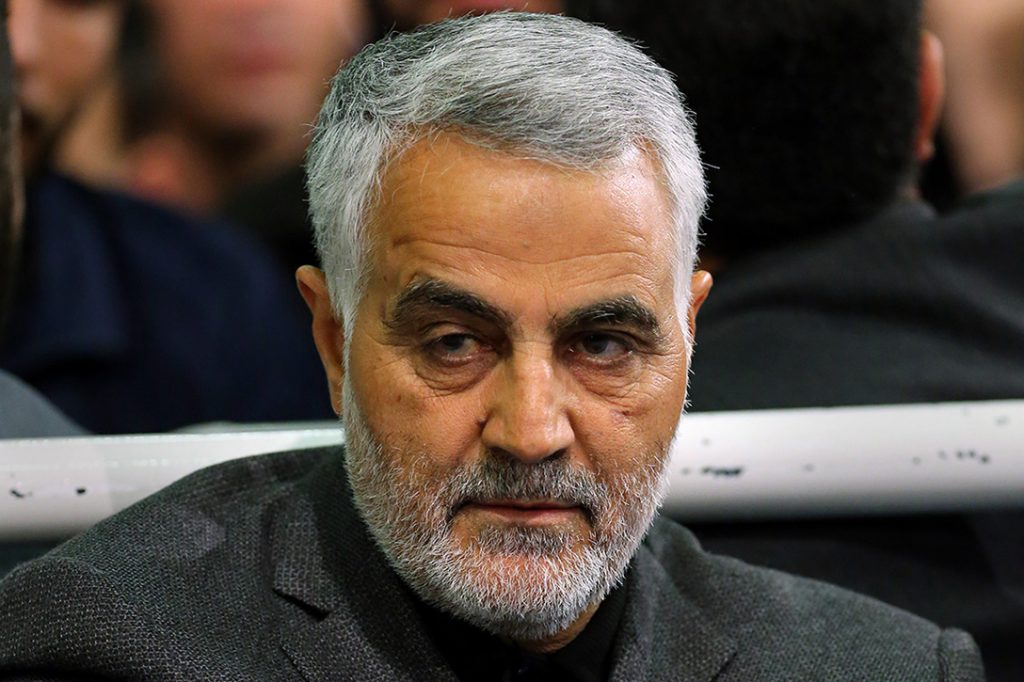
5) Qassem Soleimani
In 2013, veteran journalist Dexter Filkins published a major profile of General Qassem Soleimani, commander of the IRGC’s elite Quds Force, a political-military-intelligence organization whose mission mirrors those of the CIA, the US Army Special Forces, and the Delta Force, which is composed of members of all branches of the US military. Soleimani, like Ayatollah Khamenei, was born to poor peasant family. Filkins writes that Soleimani, as a young adult attended “sermons by a travelling preacher named Hojjat Kamyab — a protégé of Khamenei’s — and it was there that he became inspired by the possibility of Islamic revolution.” After the 1979 revolution, he joined the newly formed Revolutionary Guard Corps and was sent to the front following Saddam Hussein’s invasion of Iran.
US support to Hussein’s regime during its war with Iran was extensive and Iranians believe it included supplies of chemical weapons. This left a deep impact on the psyche of Iranians who lived through the war and experienced the devastating effects of chemical weapons firsthand. Filkins described how “in 1987, during a battle with the Iraqi Army, a division under Soleimani’s command was attacked by artillery shells containing chemical weapons. More than a hundred of his men suffered the effects.” A former IRGC officer who fought in the war alongside the young Soleimani reminisced about just how deeply affected the future Quds Force commander was by the deaths of his men. “He was sitting alone in a corner of a tent. He was very silent, thinking about the people he’d lost.”
Since he assumed command of the IRGC’s Quds Force in 1998, Iran has succeeded in building an archipelago of alliances that stretches from Baghdad to Beirut with militant Islamist groups opposed to America’s allies in the region.
In the wake of the September 11 attacks, Soleimani sensed an opportunity to defeat the Taliban once and for all by unconventional means — namely, cooperation with the US. In the fall of 2001, this cooperation materialized in the ousting of Taliban forces in Herat in eastern Afghanistan by a joint operation conducted by US, British, and Iranian special-operations forces. According to the Foreign Broadcast Information Service (FBIS), a former open-source intelligence division of the CIA, “A US Special Forces team of officers and CIA personnel meanwhile remained in Tehran to oversee the smooth operation of the joint venture — the first time the CIA was allowed to set foot in the Iranian capital since 1979.” In regards to the success of the Herat operation, an Iranian interlocutor told Ambassador Ryan Crocker that, “Haji Qassem is very pleased with our cooperation.” Soleimani similarly told the Iranian political leadership that “maybe it’s time to rethink our relationship with the Americans.” But the potential for a positive diplomatic course correction was swiftly stymied in 2002, when President George W. Bush labeled Iran a terrorist regime and included it alongside Iraq and North Korea as a part of an “axis of evil.” According to the Iranian diplomat in contact with Crocker, Soleimani was furious and felt politically “compromised.”
In the sectarian insurgency that followed the pyrrhic US triumph over the Iraqi Army, Soleimani saw a new opportunity to “bleed the United States.” His Quds force provided direct support to a variety of Shia militias, including the Badr Brigades and the Mahdi Army. Although this tactic demonstrated Soleimani’s strategic depth and flexibility — “Soleimani’s campaign against the United States crossed the Sunni-Shiite divide” — it eventually and quite literally blew up in the faces of Shia Iraqi civilians. In May 2011, at the dawn of the Arab Spring, Soleimani gave a speech in the holy city of Qom and extolled the openings that the wave of uprisings provided to Iran. “This is the fruit of the Islamic Revolution,” said Soleimani. Within that ripe fruit was a hard and bitter pit, a robust anti-Assad Sunni insurgency. In a 2013 speech to an audience of Iranian clerics, Soleimani conveyed the importance of ensuring the survival of the Iran-aligned Assad regime: “…Syria is the front line of the resistance,” said the general. “We have a duty to defend Muslims because they are under pressure and oppression … We will support Syria to the end.” This duty to protect Shia Muslims extends to other front lines, such as Lebanon, Iraq, Yemen, and even Iran itself.
On April 29, 2019, Soleimani told Iranian reporters, “By putting economic pressure on Iran, America wants to force us to enter talks with this country … any negotiation under the circumstances is surrendering to America and it will never happen.”
Despite his self-effacing, soft-spoken manner, Soleimani’s years of experience as an IRGC commander, his many successes, his ability to inspire and, most significantly, his personal dedication to all of those operating under his command — including the Syrians, Iraqis, Yemenis, and Lebanese in various militias supported by his Quds Force — have led to the development of a personality cult. To be sure, being recognized as a “living martyr” by the Ayatollah certainly doesn’t hurt. Qassem Soleimani is the face of Iranian resistance to US hegemony.
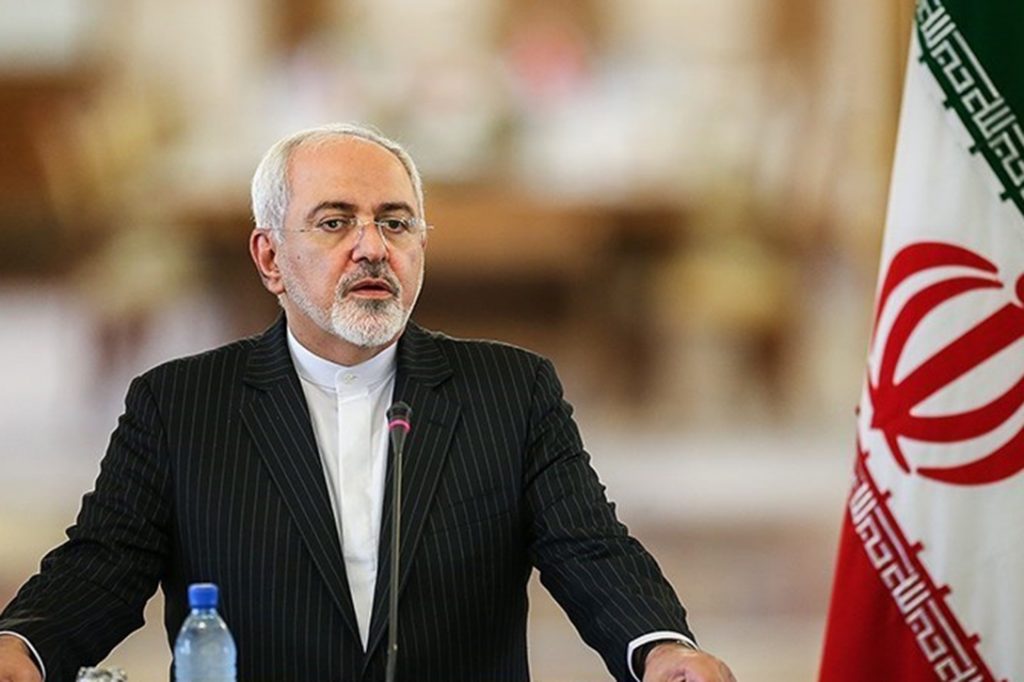
6) Mohammad Javad Zarif
Iranian Foreign Minister Mohammad Javad Zarif provides an interesting juxtaposition to Qassem Soleimani. According to a 2014 profile in the New Republic, while his “affluent, religiously devout and politically conservative merchant family in Tehran” attempted — in vain — to “protect” their impressionable young son from irreligious, liberal, or otherwise revolutionary ideas, the young Zarif eventually circumvented his parents, and found inspiration in the works of an Islamic socialist, Ali Shariati, and a secular socialist, Samad Behrangi. Shariati used Marxist concepts such as historical determinism and class struggle to “reinterpret” Islam. He sought to smash the hierarchy within Islam and create a “radical layman’s religion that disassociated itself from the traditional clergy and associated itself with the secular trinity of social revolution, technological innovation, and cultural self-assertion.”
According to Ali Alfoneh, an Iran expert at the Atlantic Council, “Revolutionary Guards who survived the ghastly battles of the Iran-Iraq War are not fond of [Zarif]. They consider him a draft-dodger.” He was educated at a private college-preparatory school in San Francisco, received a BA and MA at San Francisco State, and earned a PhD at the University of Denver. Tom Rowe, the professor who oversaw Zarif’s massive dissertation titled “Self Defense in International Law and Policy,” said that Zarif was one of his best students and that he was a “just a very nice person.” Alfoneh maintains that Zarif is fiercely loyal to the Ayatollah and a true believer in the Islamic Revolution. For Alfoneh, Zarif is an adept diplomat and negotiator, with a warm disarming smile and soft-speaking style that disguises his commitment to the Ayatollah and politico-military intelligence establishment in Iran. In other words, even though he lacks the credentials that Soleimani possesses, he is a friendly face for Iranian ambitions of regional hegemony.
In February 2019, Zarif publicly resigned his position after he was excluded from a meeting with Syria’s president, Bashar al Assad. Two days later, Reuters reported that both President Rouhani and Qassem Soleimani had refused to accept his resignation. Rouhani said, “As the Supreme Leader has described you as a ‘trustworthy, brave and religious’ person in the forefront of resistance against widespread US pressures, I consider accepting your resignation against national interests and reject it.” Qassem Soleimani declared, “Mr. Zarif is in charge of the foreign policy of the Islamic Republic.” Furthermore, “his absence from the meeting was not intentional and merely caused by a lack of coordination in the administration.”
But “Soleimani’s remarks regarding Zarif’s role in the Iranian foreign policy should be taken with a grain of salt.” In an interview with the Iran’s late president Akbar Hashemi Rafsanjani, he said, “We now have a real problem [with the Quds Force]. The problem is that these forces have deprived the foreign ministry from conducting its responsibilities in the most sensitive countries. No one can appoint an ambassador in Iraq, Syria, Lebanon, Afghanistan, and Yemen without the approval of Quds Force.”
Feeling pressure from Iranian hardliners, in an interview on February 26, 2019, a day after his resignation was rejected, Zarif reinforced his commitment to pursue the intent of the Ayatollah: “For me personally, the most important criteria has been to abide by the Leader’s orders … During the [nuclear] negotiations most of my time was focused on the red lines that the Supreme Leader had drawn … Of course, this doesn’t mean that we could satisfy all the things that the Supreme Leader wanted … What we could not achieve we would report, would get a new instruction and would act accordingly.”
The outsized influence that the IRGC possesses can also be seen in the results of an Iranian public opinion poll conducted by the University of Maryland following the 2017-18 protests. In January 2018, Qassem Soleimani was viewed very favorably by 65 percent of respondents. In contrast, Zarif was viewed as very favorable by only 36 percent. His favorability among the Iranian public peaked in August 2015 following the signing of the JCPOA, and has steadily decreased since then.
According to Tobias Schneider, a research fellow at the Global Public Policy Institute in Berlin, the current brinkmanship echoes the so-called Tanker Wars of the 1980s, in which, during the Iran-Iraq War, both sides targeted the shipping interests of their rival and its allies, eventually drawing Gulf countries and then the US Navy into the conflict. The tit-for-tat aggression culminated in the 1988 downing of the Iranian passenger plane and the death of hundreds of civilians.
The new, simmering conflict is now in the hands of men who believe aggression works. Will Trump’s “maximum pressure” work or will the US president — who is lagging in the polls and, for all his manifest failings, has never appeared to relish war — pull back from the brink? Or will Iran deescalate its maximum resistance strategy?
Afshon Ostovor, Assistant Professor of National Security Affairs at the Naval Postgraduate School in Monterey, California, thinks not. “Both countries, with their all-or-nothing strategies, are to blame … With both states unwilling to back down, the march toward war continues,” he warns.
